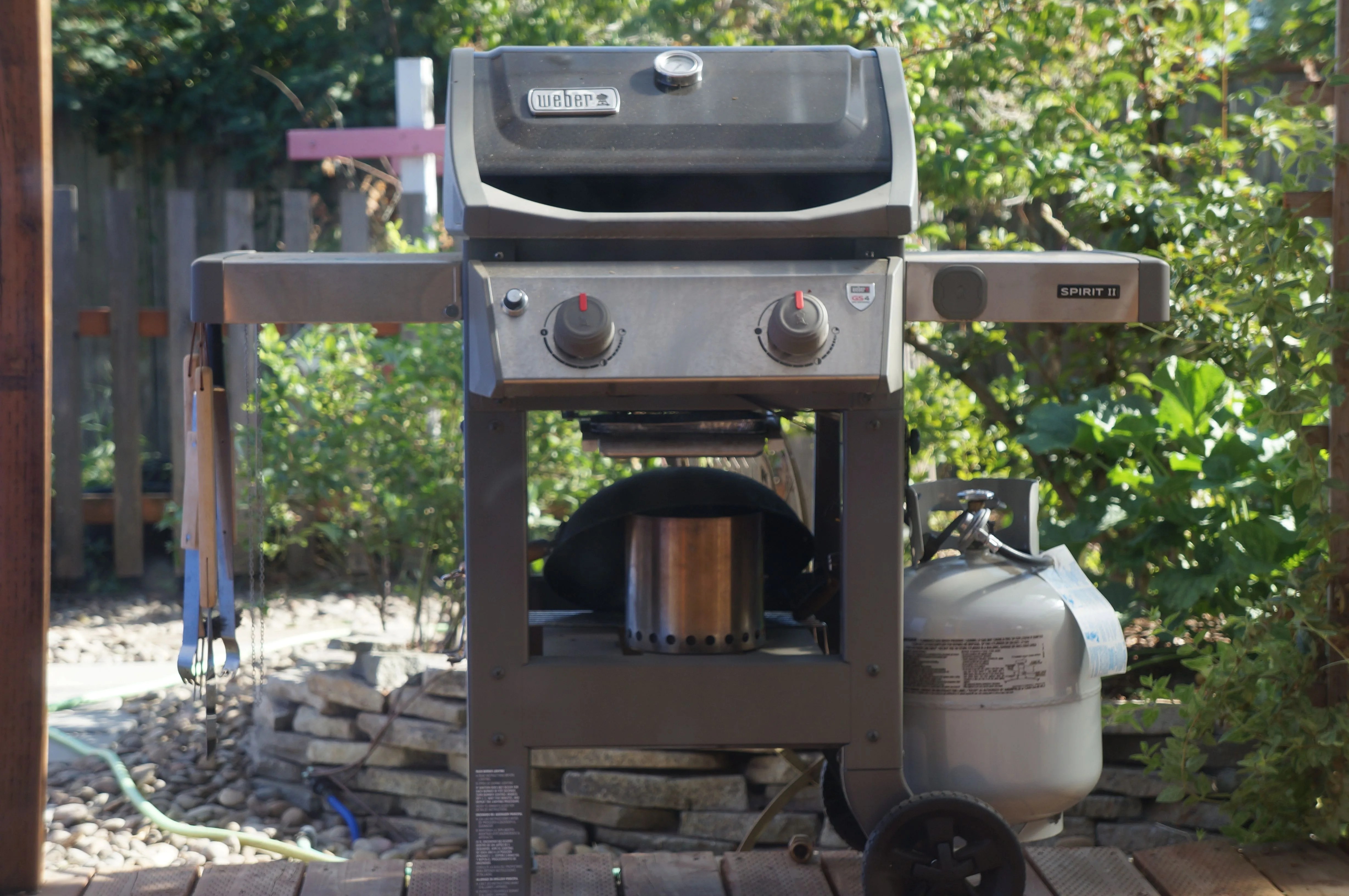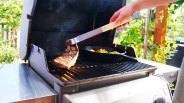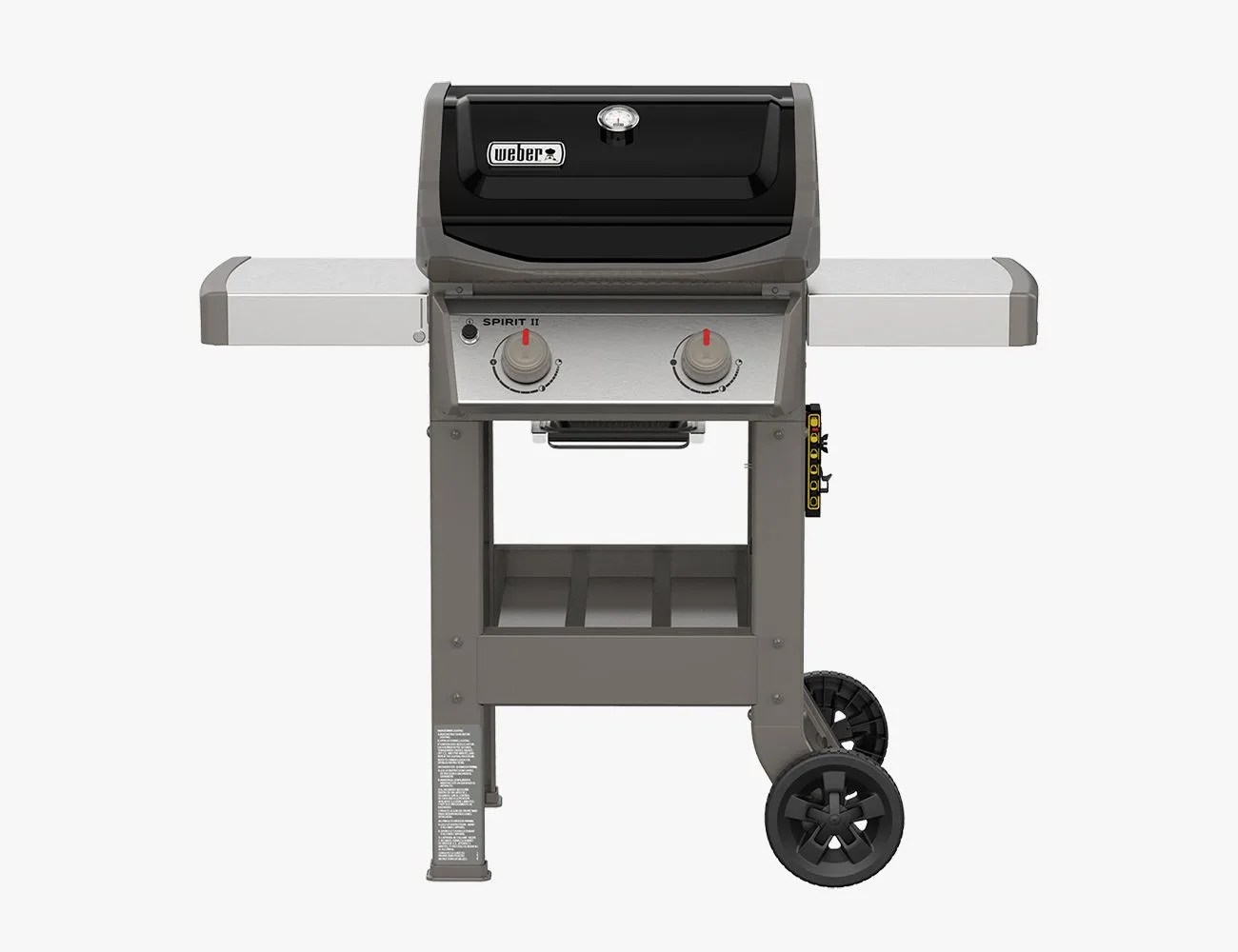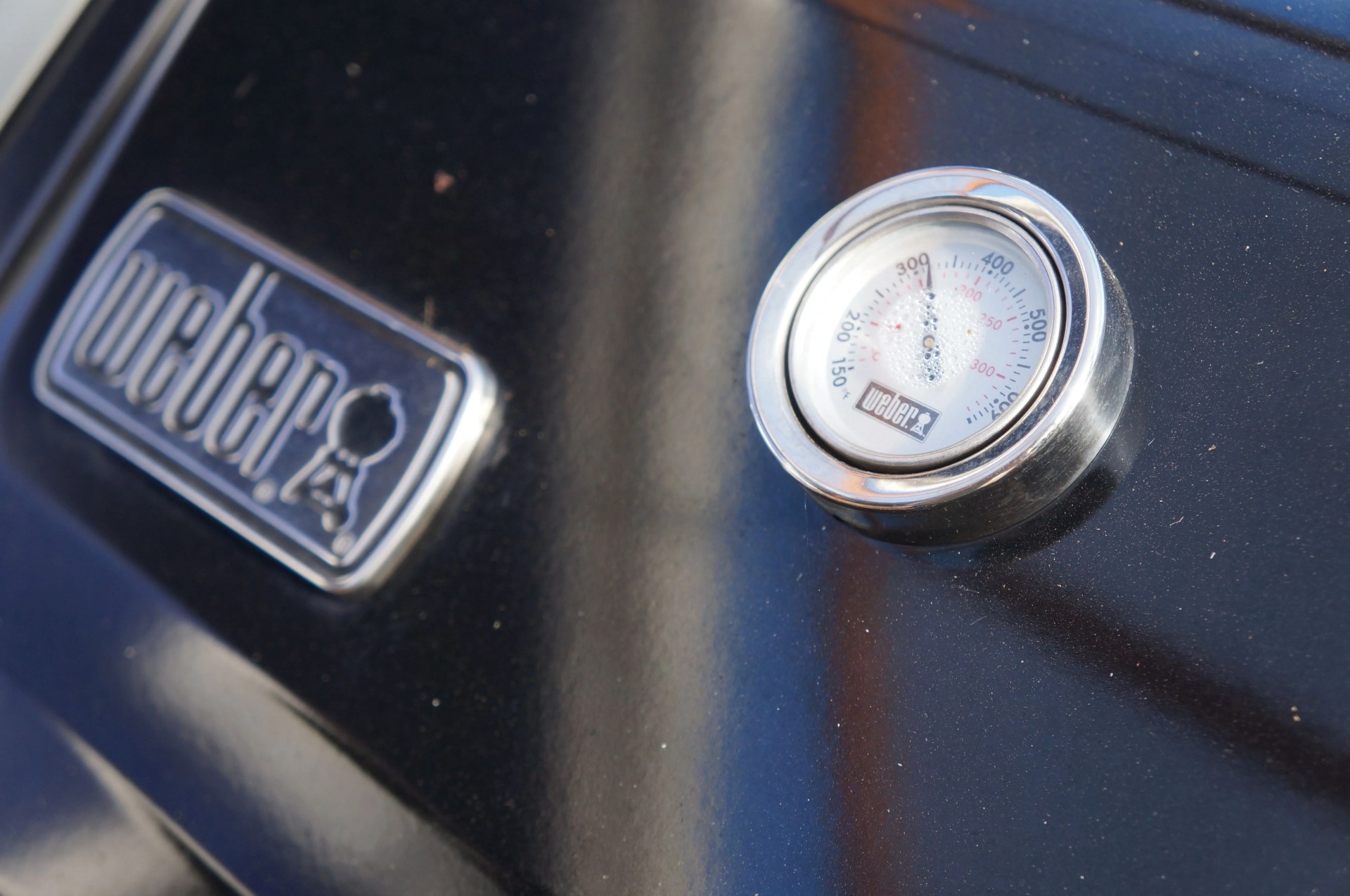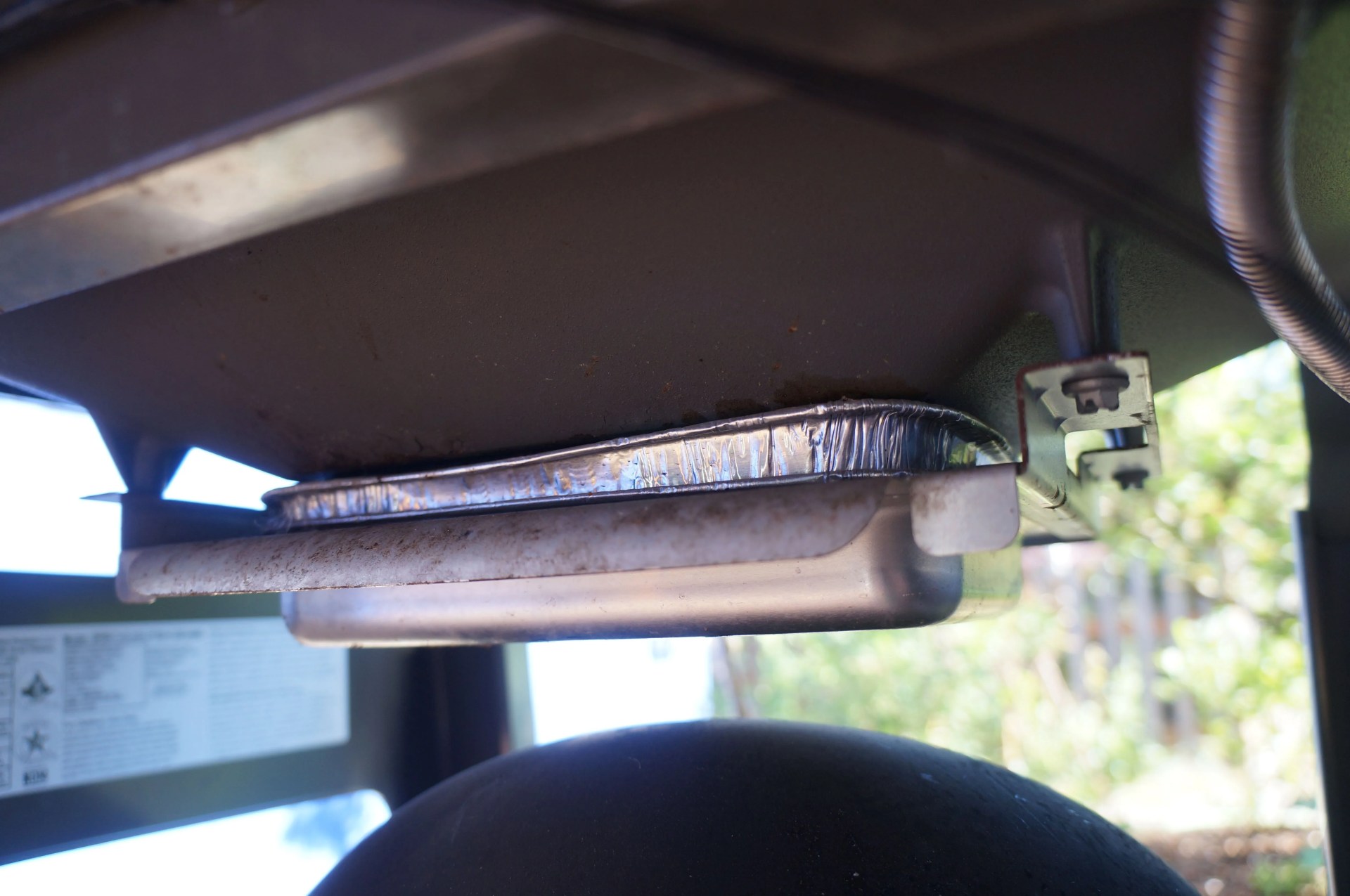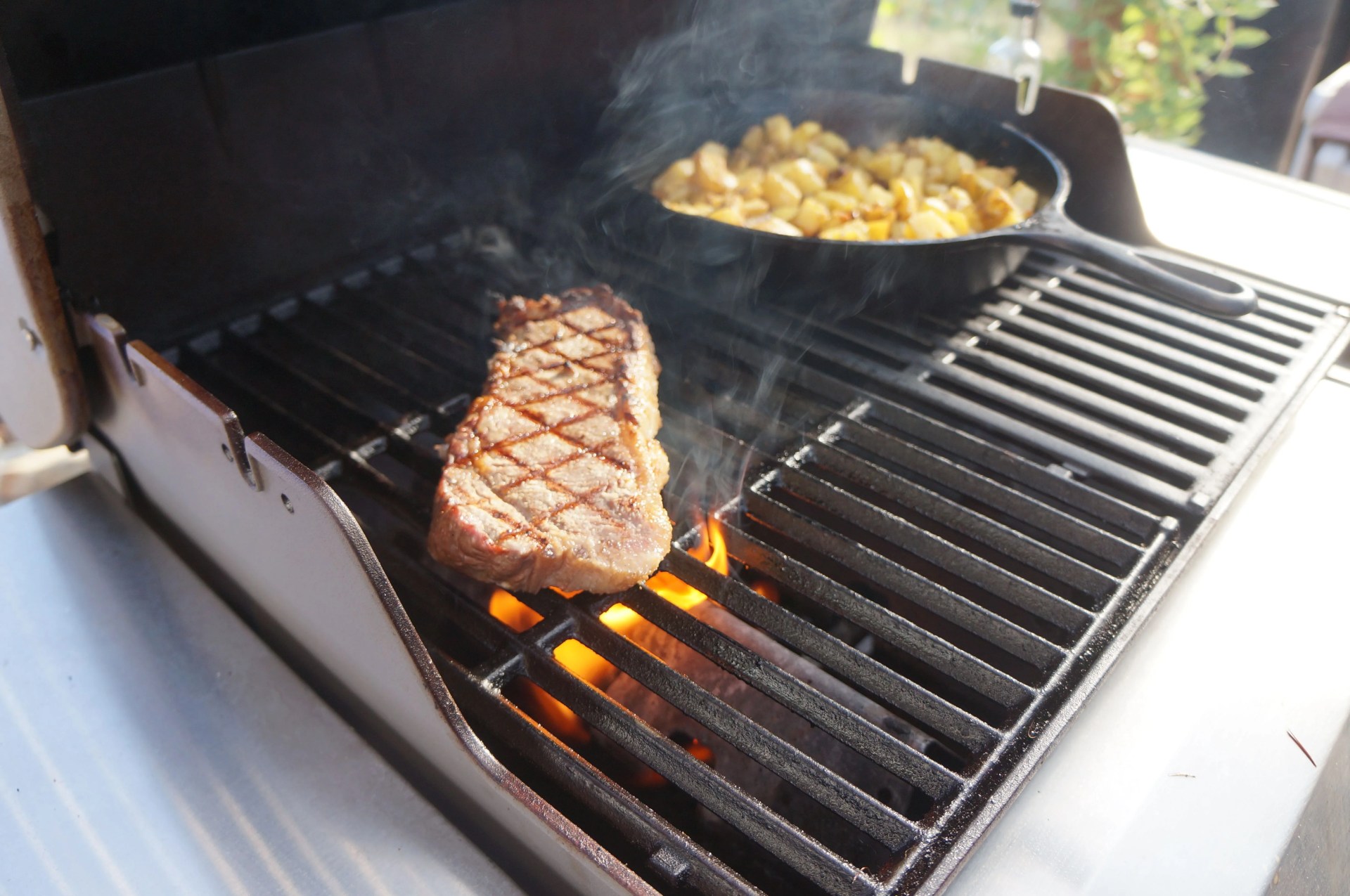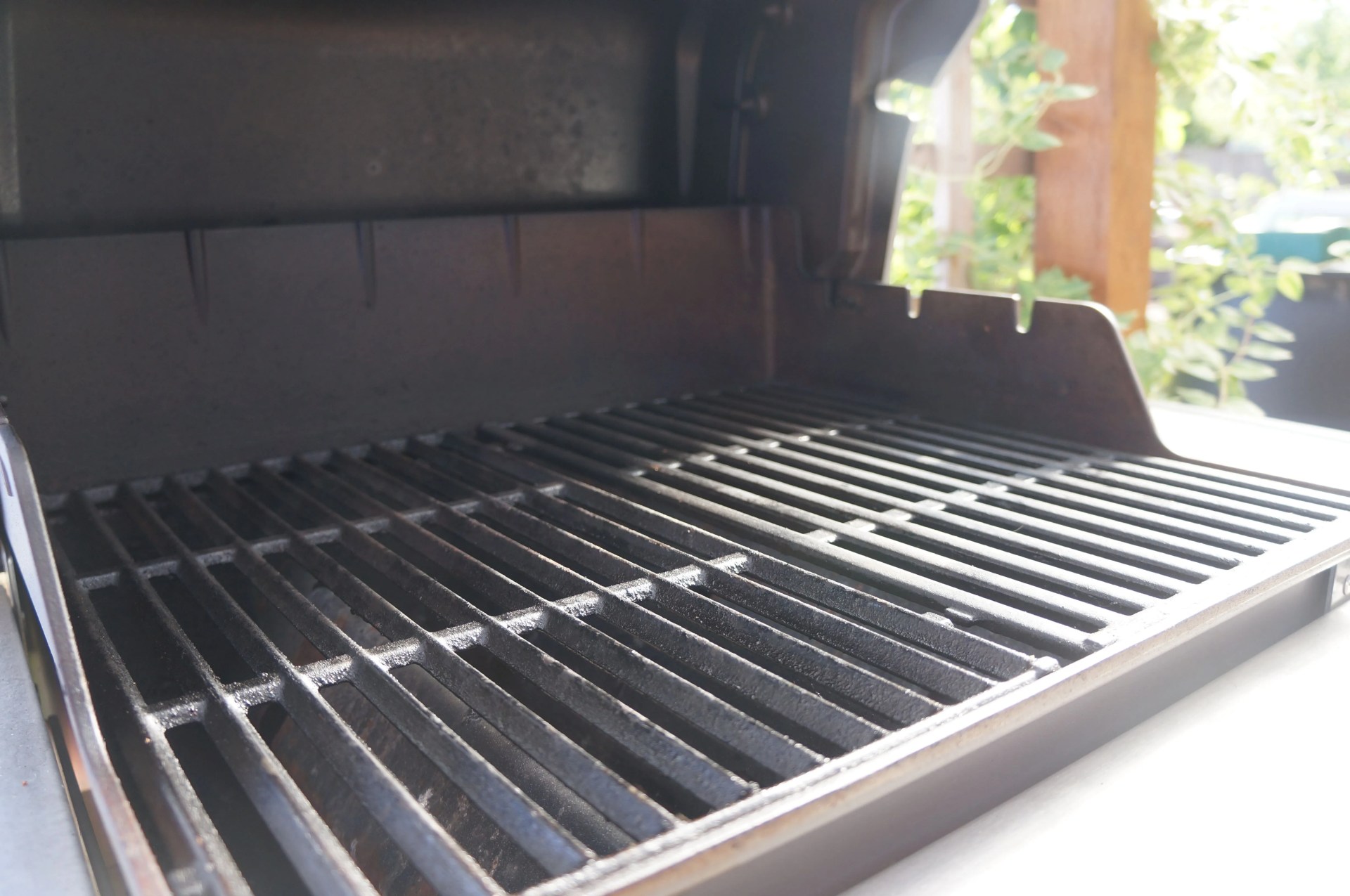What is the spirit of gas grilling? From a person who is into barbecue, my friend Kevin of Wilson Bay BBQ says that “Grilling is what we call hot and fast cooking — hot dogs and hamburgers, tri-tips and steaks. It’s the crowd pleasers that bring people together in the backyard”. While Kevin masters in the low and slow BBQ– I’ve also enjoyed hanging out around a gas grill with him. Some sausages, beer, maybe a vegetable with some quality steak, it’s all in the spirit of grilling.
This is a review of the Weber Spirit — an entry-level gas grill that Weber launched in the early ’90s. Through the 20+ years of the Spirit’s heritage, Weber has gone through multiple iterations of two- and three-burner options with open- and closed-cart designs. Currently, in the lineup of Weber models, the Spirit is available as the E-210, E-310, S-315, E-330 and SX-315. To decode these Spirit model numbers:
- “E” stands for enamel
- “S” stands for stainless
- “SX” is a stainless smart grill that is quite flashy
- The first number following the dash denotes the number of burners
- The rest of the numbers stand for the cart design and other features hidden within the mystic runes of the Weber grill manuals.
Three years ago I picked up a Spirit after seeing America’s Test Kitchens endorsement of the E-310. Praised for its performance and quality materials, I didn’t ask many questions before I bought the cheapest version– the Spirit E-210. Sure my experience with the grill has been great, but I’ve made a few observations over the years of use that may help you decide if the Spirit is the best gas grill for you.
And most importantly, if you’re on the fence about propane in the first place, I want to argue why a small grill is better.
